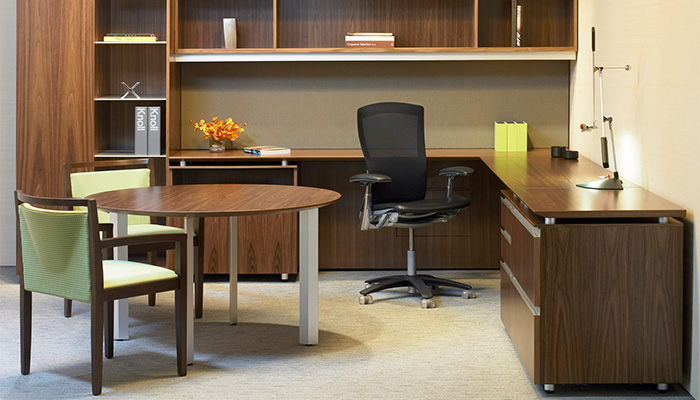
Wood is one of the most widely used materials in the workplace. It is also one of the most beneficial, capable of impacting workers psychologically and physiologically, while even benefiting a company’s bottom line. Wood’s naturalness, warmth and aspirational appeal enable it to speak to multiple generations, from baby boomers down to Generation Y, in a way that is difficult for man-made materials to do.
Moreover, wood’s timeless nature makes it a perfect choice for those who don’t care to follow trends but rather prefer to find pieces that will look current over time. Although the reasons for wanting wood furniture are numerous and varied, the one constant is wood’s ability to please a broad spectrum. By doing so, wood benefits the workplace in more ways than one.

Wood Furniture Benefits the Bottom Line
Considerations of any surface material often hinge on the material’s implications for the bottom line. Whether that means costs upfront or costs over time, cost is a factor too big to ignore – as are the financial benefits of wood.
Wood’s benefit to the bottom line stems from its aesthetics and material composition, both of which make it a sound investment choice.
Wood’s benefit to the bottom line stems from its aesthetics and material composition, both of which make it a sound investment choice. Aesthetically speaking, wood has an inherent dignity that outlasts the ebb and flow of day-to-day design trends. This is due in part to wood’s inherent durability, but also to superior finishing processes. In fact, when the highest grades of wood are finished according the most stringent standards, wood veneer’s durability actually rivals that of laminate.
However, unlike laminate, wood can be revitalized – a benefit that man-made materials cannot claim. Its material composition lends itself to the correction of minor imperfections resulting from daily wear and tear and extended use. This option of revitalization offsets wood’s higher up-front cost and thus offers customers the luxury of not having to purchase new furniture as often. Wood also benefits the bottom line by improving productivity. According to a study conducted by architectural firm HOK, sensory stimulation, which wood offers both visually and tactilely, has a positive impact on worker productivity. Just a visual change in texture can keep workers alert to a greater degree than monolithic and monochromatic design schemes have been shown to do.
Employee performance can benefit from the incorporation of wood into the overall design scheme, too. As HOK explains, because performance has been shown to be the product of ability, motivation and opportunity, and because workers’ abilities tend to improve within comfortable building conditions, the addition of wood, an inherently warm and comfortable element, can contribute to employees’ ability to rally their best.
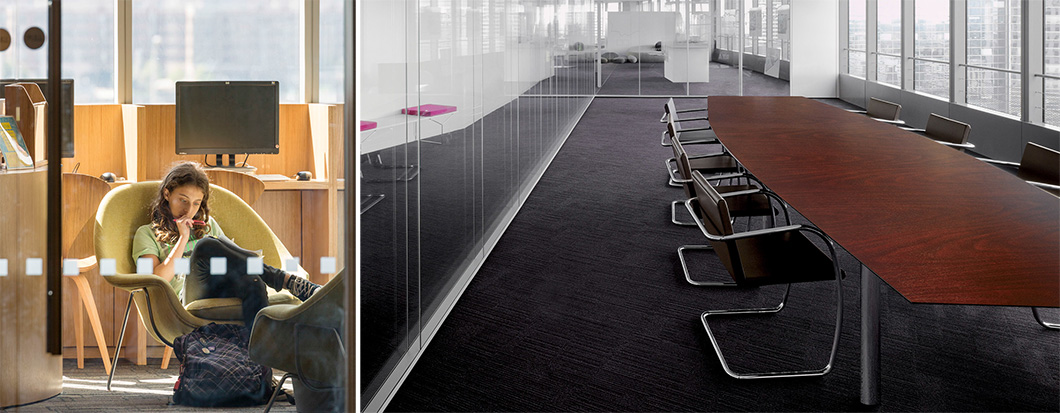
Wood Resonates with Multiple Generations in the Workplace
Among the varied benefits of using wood in the workplace, it’s wood’s ability to resonate emotionally and psychologically with multiple generations that differentiates it from man-made materials and holds the greatest benefits for a company. With company loyalty on the wane, keeping and attracting top talent across generational lines has increasingly come down to a company’s ability to speak to the values of each generation. Wood is well suited for such a seemingly daunting challenge.
According to a United Nations report on the motivations of multiple generations in the workplace, certain values overlap generational lines. One such value is aspiration and success. Perhaps because of its aesthetic beauty or the common assumption that wood is expensive, wood furniture speaks to this shared value, reflecting an image of accomplishment that man-made materials are hard-pressed to deliver.
Wood inherently has a dignified aura. It conveys a message of achievement and a rising through the ranks. This subtle message speaks to the values of baby boomers, those individuals born between 1946 and 1964, who view work as synonymous with a sense of self-worth. Work defines boomers, and a work ethic characterizes them. Hierarchy is important and a reflection of achievement. Accordingly, a wood-clad office will resonate with this generation.
Among the varied benefits of using wood in the workplace, it’s wood’s ability to resonate emotionally and psychologically with multiple generations that differentiates it from man-made materials and holds the greatest benefits for a company.
By contrast, Generation X, the least populated generation “sandwiched” between the larger boomer and Y generations, does not live to work but instead works to live. Generation X was the first generation to grow up as children of divorce. It was also the first generation of “latchkey kids,” the let-yourself-in product of dual-income parents or single working moms. This generation saw their parents’ sacrifice to the job rewarded with layoffs. As a result of these transformational societal norms, Generation X developed a cynical and distrustful attitude toward work. While this generation does appreciate hierarchy and value achievement, what motivates Generation X is job security. Wood furniture’s more costly nature intrinsically speaks to this value. It sends a message that resonates: We’re investing in you.
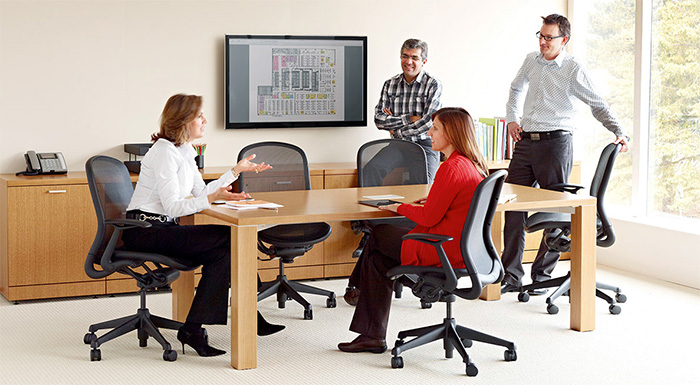
Wood furniture also sends a message that an individual’s job matters. To Generation Y, the groundswell population born between 1981 and 1997, projected to comprise the largest generation at work by 2025, this is a message that speaks to core values. To this generation all jobs matter as long as the work is meaningful and supports a larger purpose. What matters is the worthwhile nature of a job, not its hierarchy for corporate advancement, a U.S. News & World Report article reports.
However, this is not to suggest a lack of interest in money or image among Generation Y workers. Quite the contrary: A 2012 study published in the Journal of Personality and Social Psychology showed within Generation Y “an increasing trend of valuing money, image, and fame more than inherent principles like self-acceptance, affiliation, and community.” What matters is success, not necessarily the established ladder for getting there.

Among all generations wood furniture will find receptivity. This is not to say that generational differences do not affect the different generations’ approaches to wood; they definitely do. However, whereas boomers will appreciate wood as a reflection of hierarchical achievement, Generation Y will see it as ideal for across-the-board use.
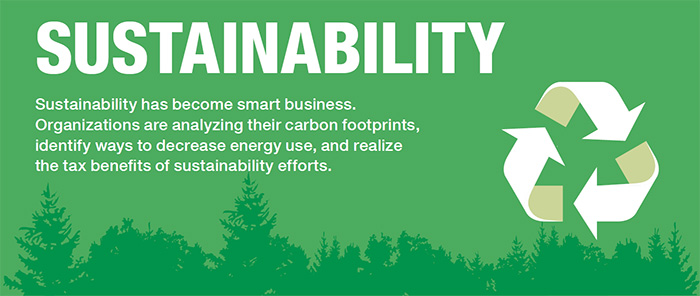
Wood’s Use Benefits the Environment
The use of wood in interior office settings has positive implications for the environment, as well. According to a 2011 United States Forest Service report on the effects of wood use on the environment, the use of wood products actually helped reduce environmental carbon to a degree unachievable through the use of non-wood products. Estimates are that for every ton of carbon consumed through the use of wood products – lest we forget, wood stores carbon – greenhouse gas carbon is reduced, on average, by 2.1 tons. The study also shows that when wood components are used in place of non-wood components for residential wall systems, the reduction in greenhouse gas emissions can be as much as two-thirds. It is not unreasonable to assume the same benefits in commercial applications.
Using wood also benefits American forests. Thanks to reforestation efforts born in the 20th century, “the average standing wood volume per acre in US forests is about one-third greater today than in 1952,” according to the United Nations’ Food and Agricultural Organization. Not only has forest growth been swift, it has also been steady. Since the 1940s national forest growth has exceeded harvest by 42 percent with forest growth volume being 380 percent greater than it was in 1920. Put simply, harvesting forests rebuilds forests. Wood furniture contributes to sustainable reforestation.
Wood furniture also appeals to the various generations’ environmental sensibilities. Baby boomers were the first generation to take on the challenge of environmental stewardship, and Generation X followed suit, furthering efforts of recycling and not hurting the environment. However, according to a 2010 Michigan State University and Deloitte LLP study as referenced in Science Daily, one of the distinctions of Generation Y from other generations is its discernment with regard to environmental stewardship. No longer is it enough to not harm the environment, this generation seeks products that actually rebuild it.
Having grown up in a time in which environmental initiatives (e.g. recycling) are free, this generation seeks environmentally minded products with an economic benefit and will pay more – substantially more – for them. With wood furniture’s manufacture actually helping to rebuild forests, its use speaks to environmental values across generational lines.

Wood Furniture Positively Affects Employee Health
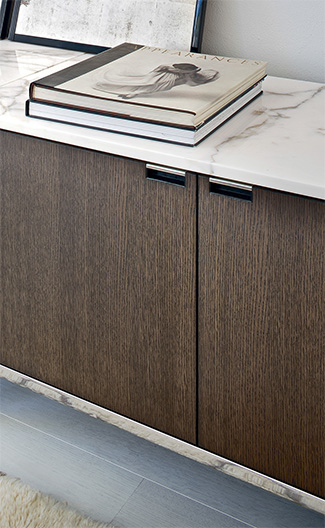
Less known but no less important is the benefit wood furniture holds for employee health. According to a research study at the University of British Columbia in conjunction with FPInnovations, a link exists between “wood visual surfaces and stress reactivity in occupants of the built environment.” The result is in line with the effect of nature on humans. Much in the way that indoor plants have been shown to alleviate stress in humans, wood surfaces, when applied indoors, also have proven to reduce individuals’ stress levels as measured by the sympathetic nervous system. Such a physiological benefit holds key implications for businesses, including happier workers, less turnover, fewer stress-related illnesses and a reduction in sick days.
Wood is a medium with far-reaching benefits and appeal. Financially, wood endures and lends itself to repair, thereby reducing the need to replace furniture frequently. In a company’s quest to appeal to multiple generations at work, wood is the one medium that holds aspirational value across the generational spectrum, while rebuilding the environment and benefiting employee health. Wood’s ability to “do it all” is both modern and timeless.
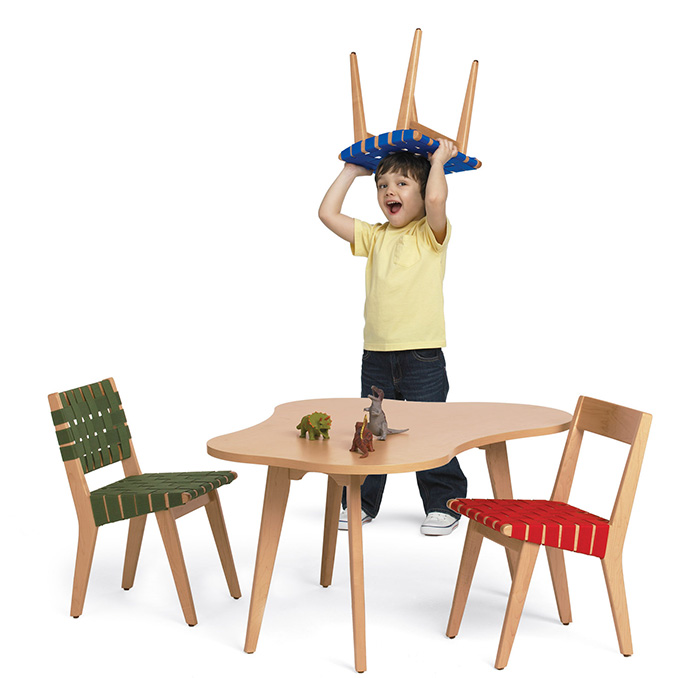
References
















